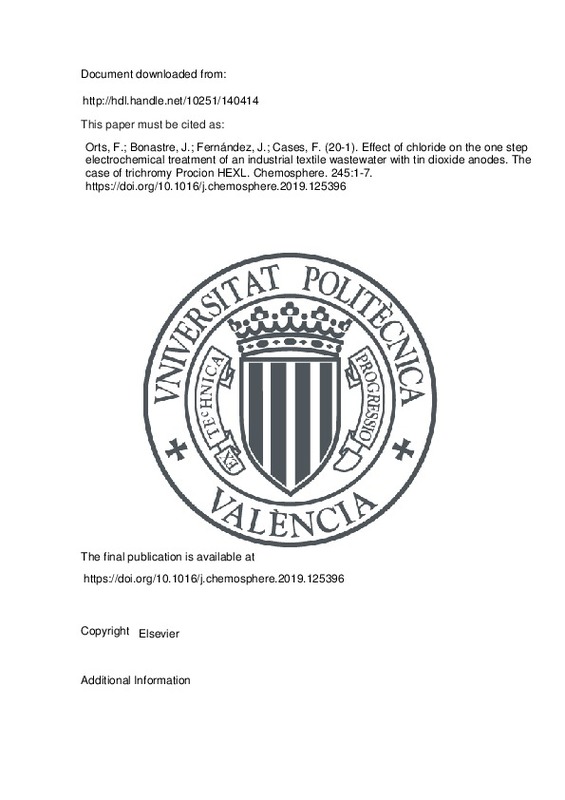JavaScript is disabled for your browser. Some features of this site may not work without it.
Buscar en RiuNet
Listar
Mi cuenta
Estadísticas
Ayuda RiuNet
Admin. UPV
Effect of chloride on the one step electrochemical treatment of an industrial textile wastewater with tin dioxide anodes. The case of trichromy Procion HEXL
Mostrar el registro completo del ítem
Orts, F.; Bonastre, J.; Fernández, J.; Cases, F. (2019). Effect of chloride on the one step electrochemical treatment of an industrial textile wastewater with tin dioxide anodes. The case of trichromy Procion HEXL. Chemosphere. 245:1-7. https://doi.org/10.1016/j.chemosphere.2019.125396
Por favor, use este identificador para citar o enlazar este ítem: http://hdl.handle.net/10251/140414
Ficheros en el ítem
Metadatos del ítem
| Título: | Effect of chloride on the one step electrochemical treatment of an industrial textile wastewater with tin dioxide anodes. The case of trichromy Procion HEXL | |
| Autor: | Fernández, Javier | |
| Entidad UPV: |
|
|
| Fecha difusión: |
|
|
| Resumen: |
[EN] The resulting solutions from the cotton fabrics dyeing using the trichromy Procion HEXL, with NaCl as electrolyte, were electrochemically treated. These dyes have two azo groups as chromophores and two monochlorotriazinic ...[+]
|
|
| Palabras clave: |
|
|
| Derechos de uso: | Reserva de todos los derechos | |
| Fuente: |
|
|
| DOI: |
|
|
| Editorial: |
|
|
| Versión del editor: | https://doi.org/10.1016/j.chemosphere.2019.125396 | |
| Código del Proyecto: |
|
|
| Agradecimientos: |
The authors wish to thank the Spanish Agencia Estatal de Investigacion (AEI) and European Union (FEDER funds) for the financial support (contract MAT2016-77742-C2-1-P and Red E3Tech CTQ2017-90659-REDT). The authors wish ...[+]
|
|
| Tipo: |
|







![[Cerrado]](/themes/UPV/images/candado.png)


